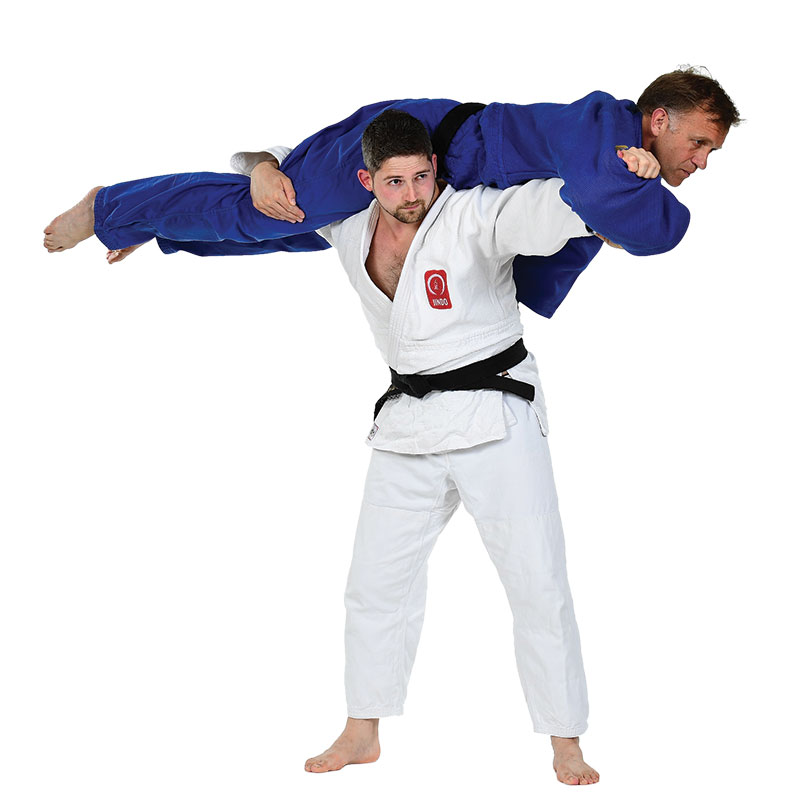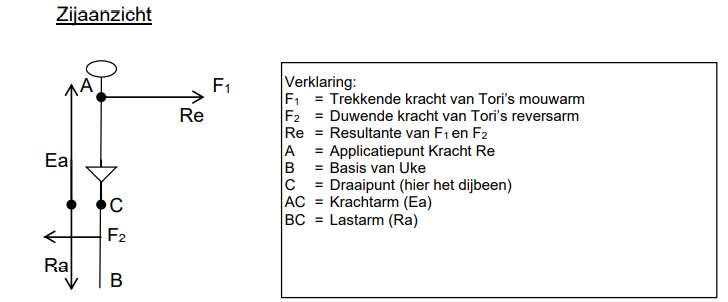Kata-guruma 肩車 (Shoulder Wheel)
Classification: Te-waza (hand technique)
Japanese meaning: Kata = shoulder, Guruma = wheel
Type: Arm throw
Technical Description
Kata-guruma is a classic shoulder-carry throw. Tori begins by breaking uke’s balance to the front or front-right corner, then lowers the stance and lifts uke onto the shoulders, across the back of the neck. With a circular motion, tori then rotates and drops uke directly in front, using gravity and momentum to complete the throw.
Traditionally taught in the Nage-no-Kata, kata-guruma is a vivid representation of skill overcoming size. Though no longer allowed in modern IJF shiai (due to leg grabbing rules), it remains a cornerstone in kata, education, and judo history.

How to Perform
-
Kuzushi (balance breaking): Pull uke forward and slightly to their right.
-
Tsukuri (entry): Lower your center of gravity, step diagonally inward, and grip around uke’s right thigh with your right hand while maintaining sleeve control with your left.
-
Kake (execution): Lift uke over your shoulders and rotate forward, guiding uke’s body over in a wheel-like motion before dropping into a kneeling or seated position to complete the throw.
Biomechanical Analysis of Kata-guruma
Kata-guruma functions as a lever mechanism with a shift into a moment during the execution phase:
-
Uke is pivoted over a fixed point (the shoulders), which acts as a fulcrum (C).
-
Tori’s sleeve hand (F1) pulls uke forward, while the gripping hand (F2) under the thigh lifts and rotates uke’s body.
-
As tori drops to the knees or seat, the throw transitions into a moment-based projection, using uke’s weight and gravity to accelerate the fall.
This combination of lifting and rotating gives kata-guruma its characteristic fluidity and power.

Did You Know?
Jigoro Kano, the founder of judo, had a personal connection with kata-guruma. In a 1927 publication, he reflected on the breakthrough moment this technique brought him:
“When I had developed enough self-confidence, I decided one day to try this technique on Fukushima – and it worked splendidly! I was able to bring his large body to the ground with ease. The joy I felt was indescribable. It wasn’t merely about defeating Fukushima; it was the deep satisfaction that my long and dedicated efforts had finally paid off.”
— Kodokan Bunkakai Sakko, January 1927, quoted in: Toshiro Daigo, “Wurftechniken des Kodokan,” Vol. 1, pp. 72–73
This story not only highlights the effectiveness of the throw but also the spirit of perseverance and technical refinement that lies at the heart of judo.